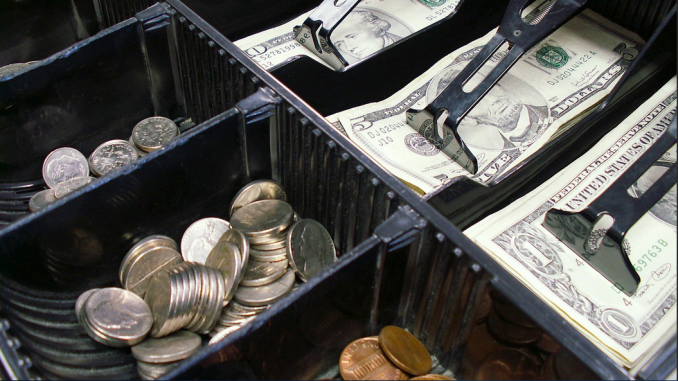
BY ELAINE GOODMAN
Daily Post Correspondent
In a sign of continued recovery for Palo Alto retailers, the city’s sales tax revenue is nearly back to pre-pandemic levels, although some parts of town and certain business segments are doing better than others.
The city’s sales tax revenue from local businesses was $28.7 million for the 12 months ending June 2023, a 5.6% increase from the previous 12 months. That was just short of the $28.9 million for the 12 months ending June 2019, before the start of the Covid pandemic.
Sales tax from local businesses hit a low of $22.4 million in the 12 months ending June 2021.
The figures are from a report from consultant Avenu Insights, which provides the city with quarterly sales tax data. The most recent numbers are from the second quarter of last year, ending with June 2023.
The numbers cited above don’t represent the city’s total sales tax revenue. Not included is the amount received from county pools. That’s where sales tax goes when someone makes an online purchase from an out-of-state company. The county then divvies up the funds to cities based on their share of total sales tax.
Sales tax from some business segments was actually higher for the 12 months ending June 2023 compared to the year ending June 2019.
Sales tax revenue from Palo Alto restaurants was up 5.0% in the 2023-to-2019 comparison; miscellaneous retail was up 12%; and service stations were up 24%.
But activity remained down for some segments in 2023 compared to 2019: 4.6% for apparel stores, 4.0% for department stores and 59% for business services.
The report also includes sales tax figures by shopping district. Those numbers are for the second quarter of 2023 – April, May and June – compared to the same three months of 2022.
The Stanford Shopping Center had a 10.7% growth in sales tax activity from 2022 to 2023, the biggest jump within Palo Alto. The greater downtown area followed with an 8.3% increase quarter-over-quarter. Town and Country Village saw a 7.5% increase.
Second-quarter sales tax activity grew 3% for California Avenue, where food products were up 21%, general retail was down 27% and “all other” decreased 9.8%.
Sales tax activity plummeted for the combined Midtown and El Camino Real area, dropping 37% from the second quarter of 2022 to the same quarter last year. General retail for the area increased 1.2% and food products held steady – while “all other” fell 56%.
The report notes that taxable sales of new cars in Palo Alto fell 18.6% year-over-year, but it doesn’t say whether that played a role in the decrease in sales tax activity for the Midtown-El Camino area.
Palo Alto’s total sales tax revenue for the 12 months ending June 2023 – including the amount from county pools — was $35.8 million. That was up 13% from the previous year and close to the $36.1 million in total sales tax for the year ending June 2019.
The city’s share of the county pool has increased, from 5.5% in 2022 to 6.3% in the second quarter of 2023.
The consultant report also includes an alphabetical list of Palo Alto’s top 25 sales tax producers. Combined, the businesses contributed 60% of the city’s sales tax revenue.
A new addition to the list in the second quarter of 2023 was Sephora. The beauty product retailer has stores downtown and in the Stanford Shopping Center.
The top 25 are:
Anderson Honda
Apple Stores
Arco AM/PM Mini Marts
Audi Palo Alto
Bloomingdale’s
Hengehold Trucks
Hermes
HP Enterprise Services
Macy’s Department Store
Magnussen’s Toyota of Palo Alto
Neiman Marcus
Nordstrom Department Store
Richemont
Rivian Automotive
Sephora
Shell Service Stations
Shreve & Co.
Stanford Health Care
Tesla
Tesla Lease Trust
Tiffany & Co.
Union 76 Service Stations
Varian Medical Systems
Volvo Cars Palo Alto
Louis Vuitton

Yeah, and credit card debt is up to almost $1.3 Trillion.
Is this supposed to be good news, that the city is collecting more tax revenue from businesses? I prefer those dollars be kept in the hands of businesses to reinvest, pay higher wages to workers, or to save and let entrepreneurs borrow that money in the form of loans. The vast majority of government spending is inefficient and wasteful.
Shouldn’t those retail “catchup” targets be 14-17% higher due to inflation?
Being at 2018 sales six years later isn’t a win, it’s not even breaking even.